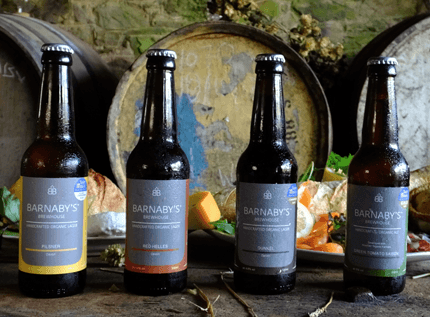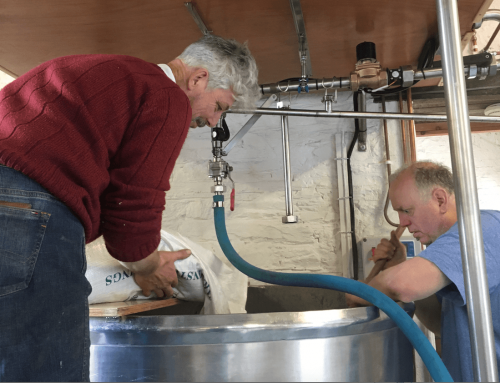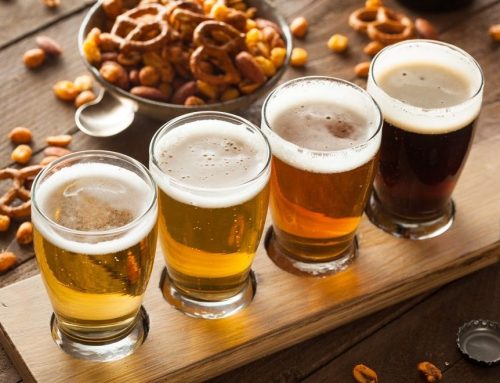Beers undoubtedly work brilliantly as an accompaniment to many food styles, but how do you decide which beer to try with which each course of your meal? Here are some straightforward and intuitive guidelines to help with experimentation. Enjoy!
Once Dryanuary was over were you reaching for a bottle of red wine with your roast beef? Or some white wine with your roast chicken. Did the wine get added before you reduced the gravy?

In the UK we seem to predominantly associate wine with food. We have cheese and wine parties, sparkling wine on special occasions, dessert wines for dinner parties. In restaurants wine menus and house wines. In up market places there may be a wine waiter to make recommendations with your meal or the chef may have created a set menu with a wine flight (pairing a particular wine with each course).
But when did you last see a beer menu? Not just a list of beers with prices, but a range of beers – listed by category – each with flavour descriptions and food pairing suggestions?
When did a waiter last recommend a particular beer to accompany the dish you just ordered? When did you last try different beer styles with each course of your meal?
In this country beer is often overlooked – or at best underrated – as an accompaniment to food. Yet beers offer the most amazing and versatile range of options for food – as a beverage and as an ingredient.
Why is this?
Well, beer styles are the product of an amazing synthesis and diverse variations of their ingredients:
- The malted barleys, depending on how they are kilned and used, provide light biscuit through caramel to nutty, rich toffee, chocolate, coffee and roasted flavours.
- Hops – in addition to providing a range of bitterness – offer delicate aromas, floral notes, citrus, pine, mango and a wide range of other characteristics.
- The yeast variety (or varieties, as sometimes more than one is used) brings a completely new dimension. Lager yeasts (which take longer to ferment at cooler temperatures) produce very clean malt profile. Ale yeasts, fermenting at warmer temperatures, leave more unfermentable sugars in the beer which give it a different mouthfeel, and they can produce a tremendous number of additional flavours including a range of fruit flavours. Wild yeast can produce delicious sour beer flavours. The length of the fermentation in all cases will impact on the sweetness or dryness of the beer.
- The mineral profile of the water used to brew can also have a major impact on the beer style. Historically, the soft waters of Pilsn were ideal for the local lager styles whilst the water of Burton on Trent – with a high mineral content – was ideal for IPAs.
- Other ingredients include adjuncts such as malted wheat which aids head retention (often a desirable characteristic), fruit, honey, herbs and spices – brewers will experiment with almost everything!
And then there is the method of conditioning which can range from the subtle cask conditioning of traditional English ales to bright champagne like carbonation of some Belgian styles.
The endless combinations of these factors have delighted both brewers and drinkers for centuries and the modern boom in craft brewing worldwide continues to push the boundaries of what is possible.
Food Pairing Rules
So how do you decide what beer to pair with your food?
There are some very basic rules to start you off:
First, match the intensity of the food with that of the beer. Strong flavoured foods require strong beer flavours. A rich game stew will overpower a delicate lager but will match beautifully with a porter or a stout. That same stout, however, would trample over a delicate salad or a light fish dish.
Second, think about either complementing or contrasting the flavours. Try matching sweet with sweet or contrast it with sour. A sour beer on its own might not be to everybody’s taste but, when paired with a pickled dish – such as rollmop herrings – it can be incredible.
Third, pay attention to the texture of the beer. A smooth silky stout, as well as matching the flavours of a chocolate mousse or truffle, will also compliment the texture of the food. A crisp pilsner, however, will pair will with a crisp, lightly dressed salad.
Finally, think about the level of carbonation and acidity of the beer. This is known as ‘cutting’ as it cuts across the flavours in your food. The acidity produced by the hops during the boil helps to break down fattiness in food and the carbonation will lift it from the tongue and refresh the palate between each mouthful.
These basics should be part of the vocabulary of anybody selling, serving or tasting beer. For the beer on its own can be wonderful but – paired with the right food – it can be exceptional.



